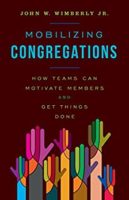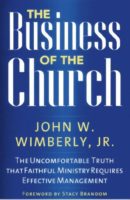
Most congregations say they want to grow in membership and mission—a goal that feels more urgent as the members age. In worship, a person aged 65 is likely to see mostly older people. It’s a good way to feel young at age 65! However, it is not a great sign for the congregation’s future. If they fail to attract new and younger members, many congregations will soon cease to exist.
When I’m hired to help a congregation grow, I have learned to listen for resistance points to growth. They are legion. Members often say they want to grow, but when a strategic planning process starts, they worry about what will happen if they do grow.
I worked with a small-town church not far from a burgeoning metropolitan area. Developers have plans to build five to ten thousand new homes in the fields near Main Street. As literally the only church within twenty minutes, this little congregation had an amazing opportunity to grow.
Before arriving for a session with the leadership, I read the church’s history and recent annual reports. They were founded in the 1880s with a membership of 100. Today? Almost 140 years later, they had 128 members. That tells me, as a believer in congregational systems theory, that we we were dealing with a system that enjoys being at or around 110 members.
If we grow, what will we lose?
Sure enough, as we discussed the future, the biggest topic wasn’t the opportunity for growth, though the congregation is full of senior citizens. The members kept coming back to the fact that they love being small. They like the intimacy, the feel, of a small congregation. They like knowing their pastor and their pastor knowing them, the small sanctuary, and so much more.
As we discussed the topic of growth, they kept jumping ahead to scenarios that unnerved them. What if we must build a new sanctuary? (We can’t afford it). What if must hire more staff? (Where will we find them? We can’t afford it.). We won’t know everyone. (We really want to know everyone!). We won’t know everyone. (WE REALLY WANT TO KNOW EVERYONE!).
Jumping ahead to unnerving scenarios is a classic maneuver for resisting change. If we can make change look bad enough, we’ll have a great excuse for not embracing change.
I don’t know what the wonderful folks in that small church are going to do. I told them they have every right to remain small and enjoy their current delights as long as they can. But I also asked them to acknowledge that there is probably a term limit on continuing at their current size and demographic makeup in the 21st century. Things around them will change to the point that remaining the same size for the next 140 years may not be possible. I also explained that if they don’t take advantage of the growth opportunity, other congregations will likely reap the harvest.
Scary growth scenarios
Many congregations face similar threats and opportunities. The folks in this formerly rural—but soon to be suburban—congregation were simply more honest than most in owning up to their anxieties about growth.
As congregations plan for the future, they often project a growth scenario that justifies or reinforces preconceived ideas and concerns about growth. The scenario itself becomes an excuse not to grow. To counter this tendency, I stress that we can only plan for the next three years, not the next thirty. Let’s not imagine having to build a new sanctuary when we have 90 people in worship in a sanctuary that holds 135. Instead, let’s think about a second worship experience when it is needed. That doubles our worship capacity immediately. Let’s not think about adding pastoral staff when it will be quite a while before that is necessary.
Rather, let’s consider how we can make our ministry more relevant to younger generations (and perhaps also to the older folks). Let’s consider how we can build a children’s and youth ministry from scratch—one child at a time. Let’s consider how we can create the kinds of hands-on mission projects younger people love. Let’s consider how we can build a website that serves as the congregation’s 21st-century front door to the world.
To grow or not to grow? It is a question that unearths so many assumptions and anxieties we bring to planning for the future of our congregations. But for many congregations, the opportunity to begin taking concrete steps to welcome more and younger people has become too urgent to ignore.
John Wimberly is an experienced pastor and consultant. As a consultant, he has worked with congregations and judicatories on strategic planning, staff designs for the 21st century, and congregational growth as well as financial and administrative management. He has MBA, MDiv, and PhD (theology) degrees. His books focus on effective management and leadership. John believes congregations can have a bright future!



